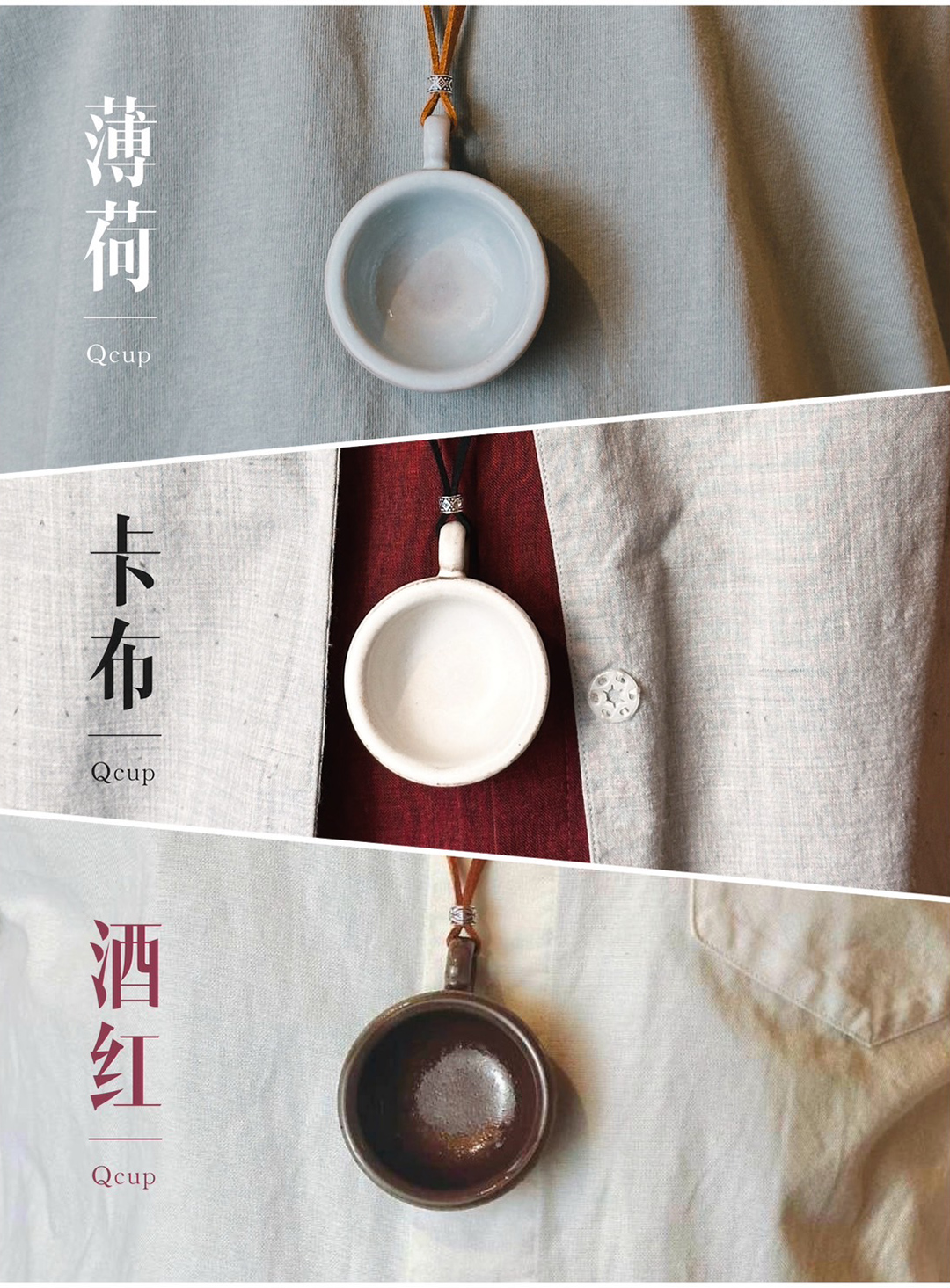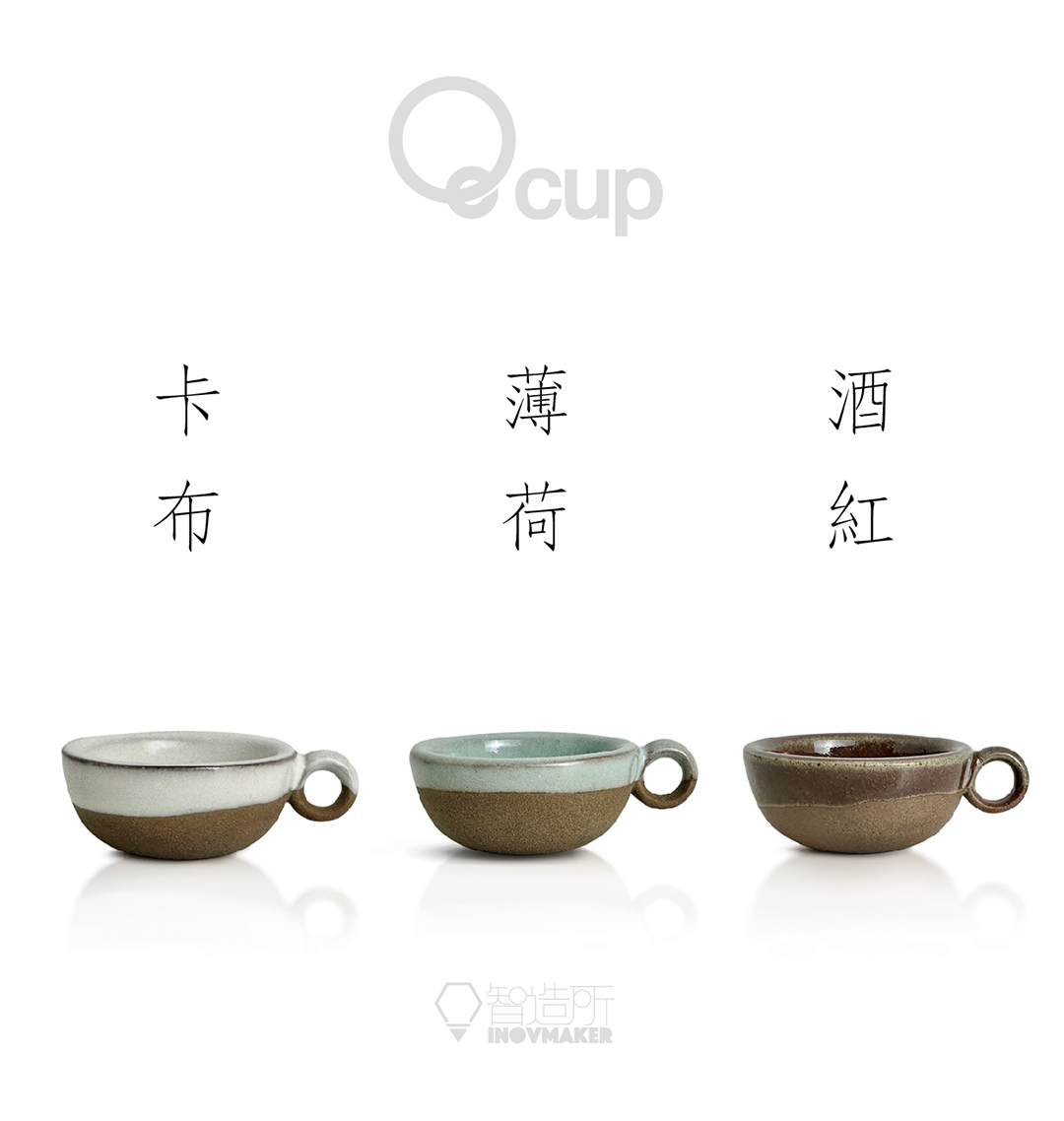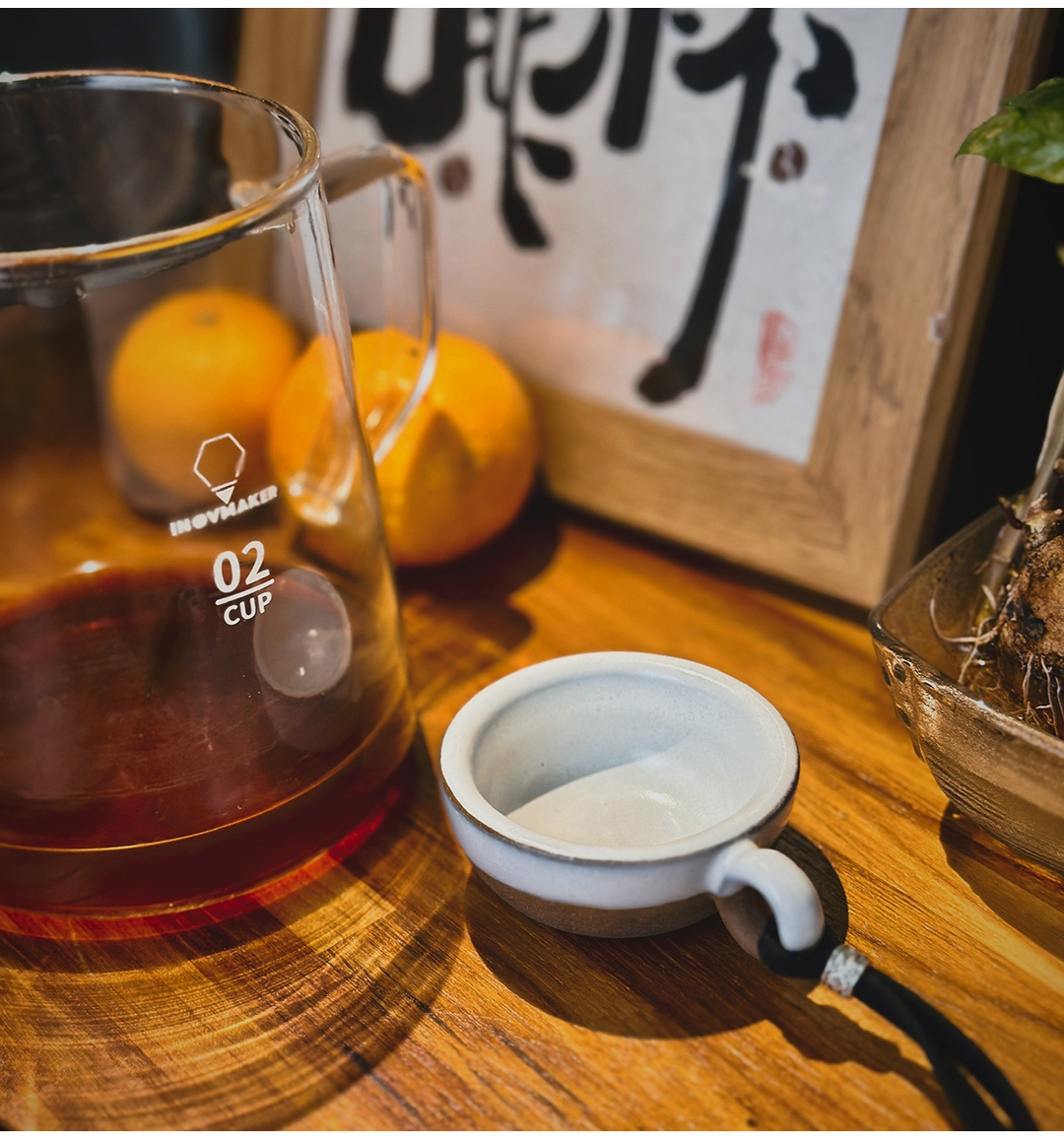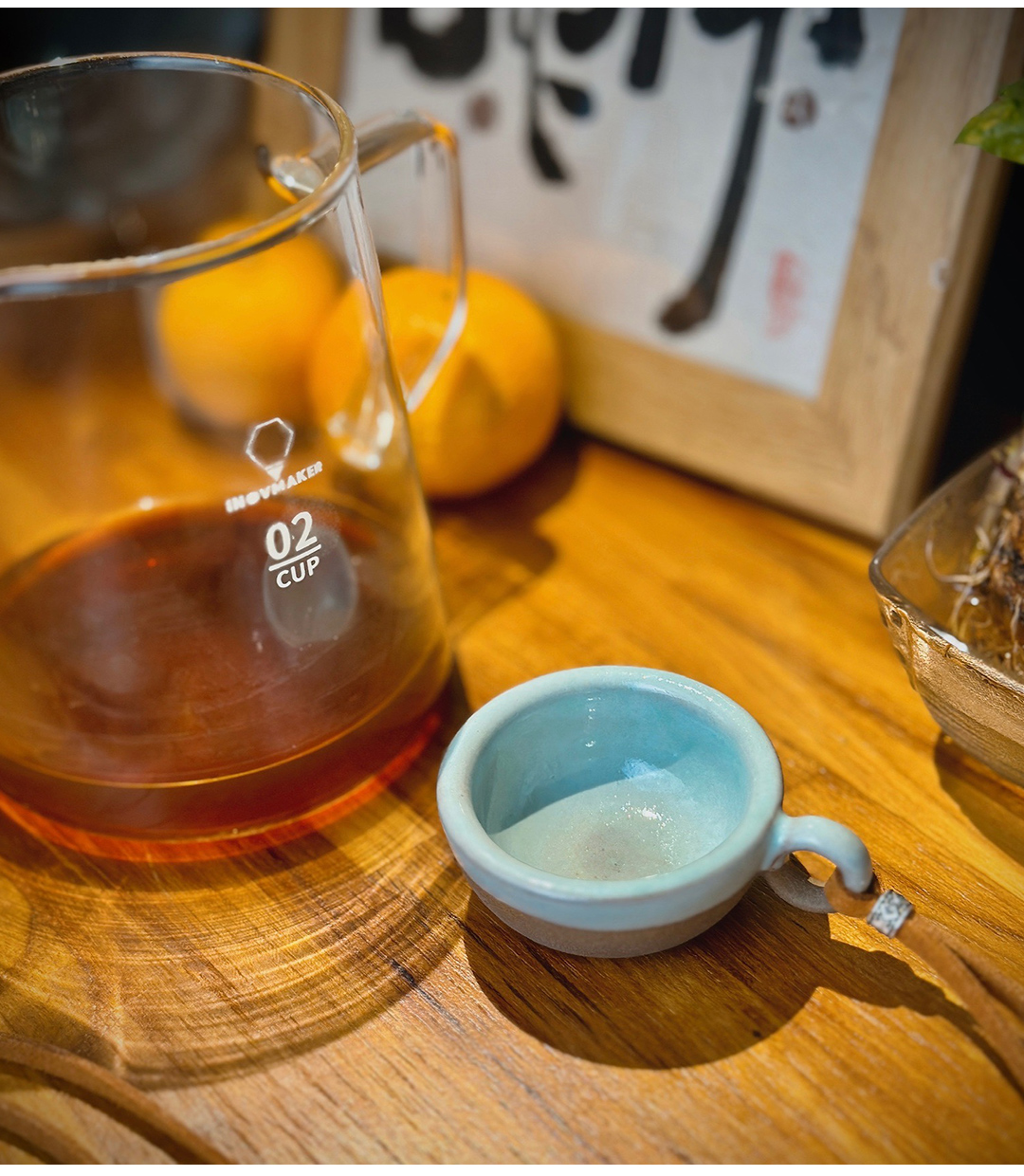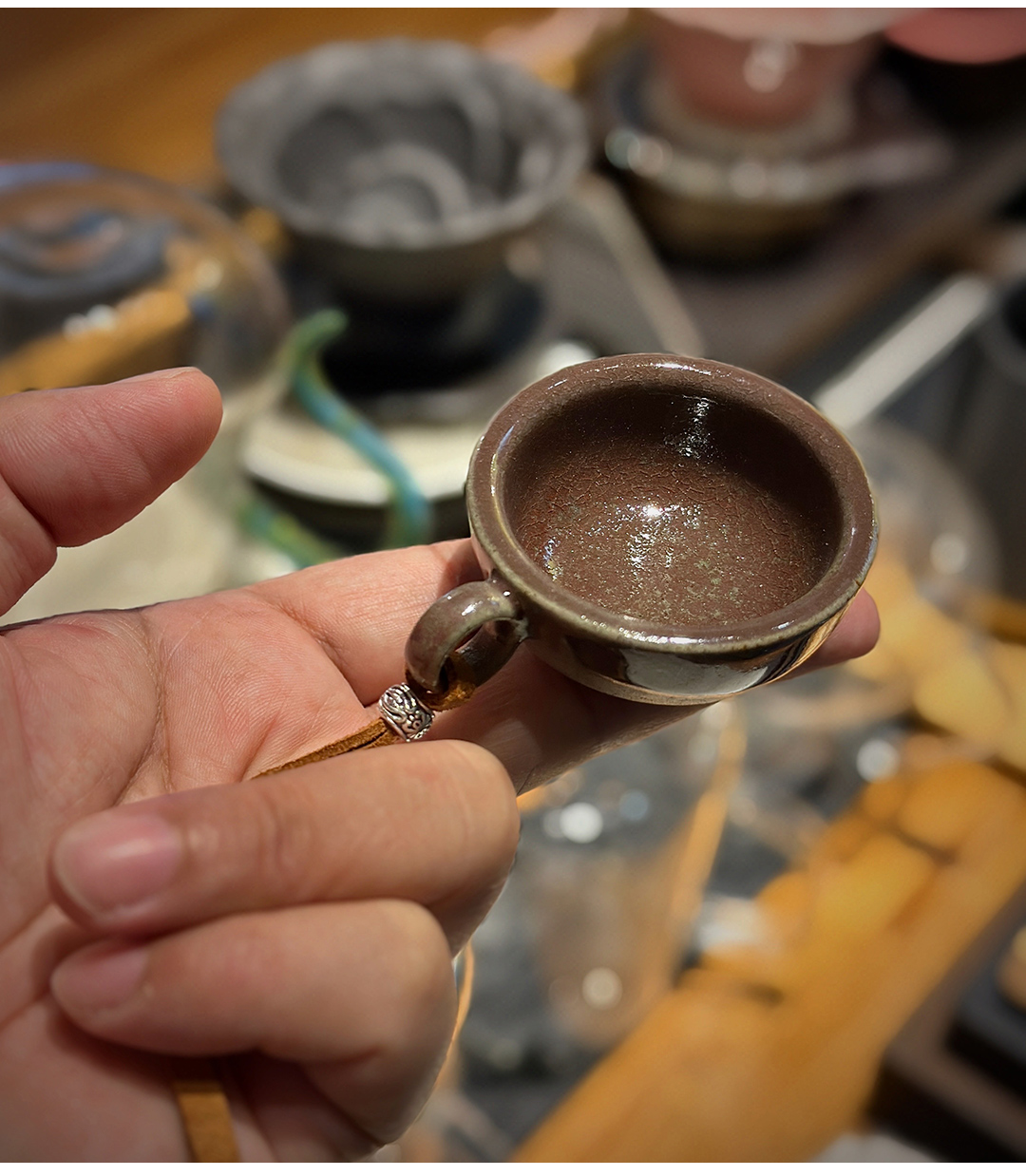designer says:
In the past, I used to wear a cup when I went to the store or visited coffee, tea, wine and beverage exhibitions.
I understand the pain of someone bumping a big cup into your chest;
As a Q grader, barista and designer, I use cupping spoons mostly for drinking soup.
The average capacity of a small cup is 60 to 70ml, and you still need to drink a lot of coffee at the end of the day.
So I thought why can’t I design a cup that’s the size of a cupping spoon and wear it on my body?
The design concept of the Q cup is to combine the cupping spoon with the cup.
And we hope to combine it with pendants to make the Q cup a body accessory and ornament;
For the first generation Q cup, we use Taiwanese vermilion clay.
There are vermilion red, smoked black, and a small amount of glaze plates, which have been tested countless times by potters.
It was unrealistic to expect the glaze to perfectly combine with the vermilion mud, so we changed the material.
The new generation Q cup uses Japanese Seto soil mixed with Taiwan Zhuyan clay.
Make the glaze more stable and easier to present different styles.
Which one do you like?






In the past, I used to wear a cup when I went to the store or visited coffee, tea, wine and beverage exhibitions.
I understand the pain of someone bumping a big cup into your chest;
As a Q grader, barista and designer, I use cupping spoons mostly for drinking soup.
The average capacity of a small cup is 60 to 70ml, and you still need to drink a lot of coffee at the end of the day.
So I thought why can’t I design a cup that’s the size of a cupping spoon and wear it on my body?
The design concept of the Q cup is to combine the cupping spoon with the cup.
And we hope to combine it with pendants to make the Q cup a body accessory and ornament;
For the first generation Q cup, we use Taiwanese vermilion clay.
There are vermilion red, smoked black, and a small amount of glaze plates, which have been tested countless times by potters.
It was unrealistic to expect the glaze to perfectly combine with the vermilion mud, so we changed the material.
The new generation Q cup uses Japanese Seto soil mixed with Taiwan Zhuyan clay.
Make the glaze more stable and easier to present different styles.
Which one do you like?

